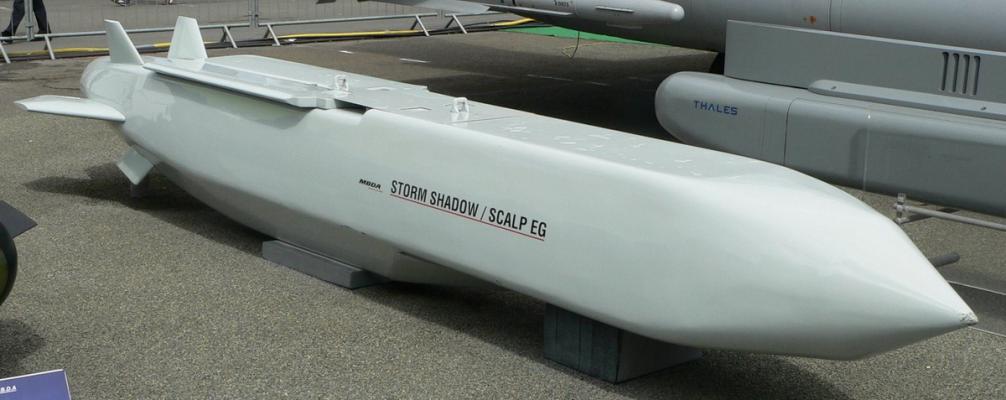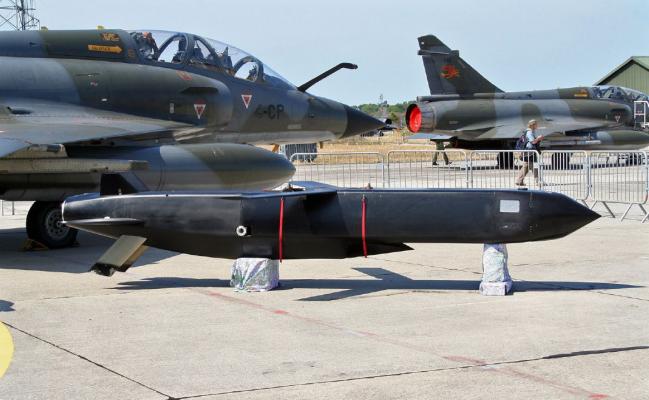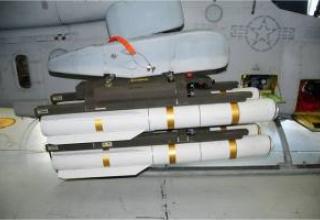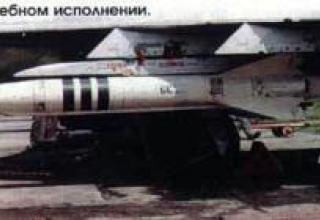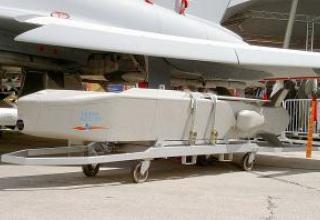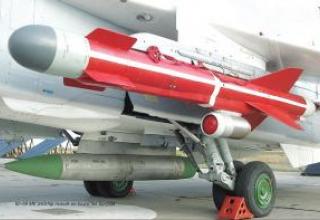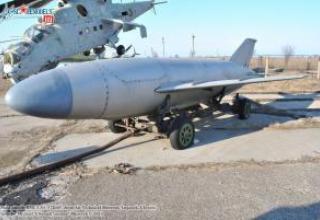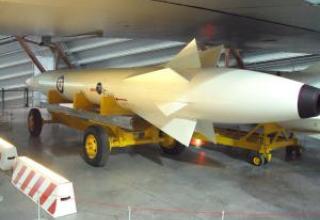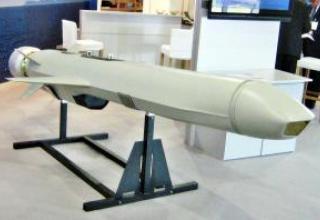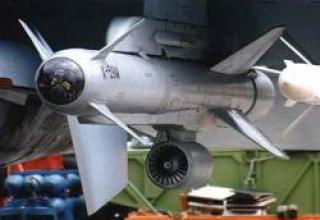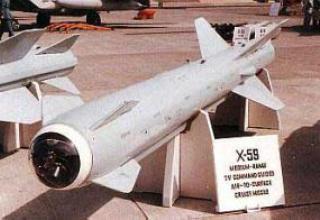The SCALP cruise missile (CBM) was created on the basis of the Apach rocket developed by Matra BAe Dynamics since 1984 and looks like it has little difference from it. The name SCALP-EG (Systeme de Croisiere conventionnel Autonome a Longue portee Precis - Emploi General Purpose, "multi-purpose high-precision long-range cruise missile with autonomous guidance") was given to the promising CD by the developer, while the French armed forces adopted the official name APTGD (Armament de Precision Tiree a Grand Distance, "high-precision long-range ammunition") to describe the new missile.
A variant of the missile, created by Matra on request of the British Air Force to equip fighter-bombers Tornado and Harrier GR7, was designated Storm Shadow.
The French Navy will primarily equip SCALP fighter-bombers Rafale, Mirage 2000, Eurofighter and in the future multi-purpose nuclear submarines of the new generation (on the submarine the missiles will be placed in the airlock vertical launchers). Experimental design work on the development of a missile version designed for a submarine was started in mid-1995. As a result, it is not excluded that this version of the CD could be further developed to equip it and surface ships of the French Navy.
In January 1998, the French Ministry of Defense signed a contract with the developers of SCALP missiles, the total amount of which is 745 million dollars, to supply the French Air Force and Navy since 2003, 500 SCALP-EG missiles. It should be noted that this volume of planned deliveries of new missiles (which existed until mid-1997, the plans provided for the purchase of only 200 missiles of this type) reflects the re-evaluation of the value that can have long range cruise missiles in the French military, influenced by the events of the last two or three years. Particular attention is being paid to developing missile versions that can hit ground targets at known coordinates, but work is continuing on developing a new generation of anti-ship missiles and equipping French navy ships and aircraft with them.
Composition:
The most important difference between a SCALP missile and a prototype is in the composition of the used guidance system and the range of the SCALP - it is 250 km and in the future should be brought to 400 km against 150 km for Apach. A twofold increase in the range of SCALP is achieved primarily by reducing the size of the payload compartment and placing an additional fuel tank in the available volume. The boom-like wing of the missile in the marching position is 2.53 m. Small-size turbojet engine "TRI Microturbo 60-30" provides an opportunity to fly at an extremely low altitude with a marching speed of up to 1050 km/h.
For launching from the submarine, the KR will be equipped with two solid propellant launch accelerators.
The 2.2 m long compartment located in the central part of the missile body is designed to accommodate the combat load, the total mass of which can reach 700 kg. At present, the SCALP is considered by the French Ministry of Defense primarily as a means of isolating combat areas. For this reason, MIFF anti-tank mines, MUSA GP or MUSPA anti-personnel mines or KRISS or Samanta munitions designed to destroy runways of airfields are planned as the combat load for the new missile. It is possible to equip the CR SCALP with a concrete piercing BC capable of penetrating concrete walls 5-7m thick.
In the design of the SCALP missile used a number of measures aimed at reducing primarily its radar visibility of the missile: the missile body is formed by the intersection of flat surfaces that do not have, however, sharp edges in the interface, and covered with radio-absorbing material, engine turbine blades are shielded from the sighting by ground radar curved air duct, etc.
Decrease in the probability of detection of the missile in flight contributes to the fact that the entire marching section of the trajectory it passes at an altitude of 100-150m, and immediately before the attack of the designated object is reduced even lower - to 50m.
When developing the SCALP guidance system, the tactical and technical requirements prohibited the use of the NAVSTAR satellite navigation system as the main one. This decision was political and was taken by the French Government on the grounds that France had no control over the NAVSTAR SNA established and operated by the United States. Under such circumstances, it cannot be ruled out that, in a crisis situation, the United States might make adjustments to the operation of the SNA (by replacing, say, the codes of information transmitted) and that the precise navigation of the French weapons systems attached to it might prove difficult or even impossible.
In order to avoid such a possibility, as well as to exclude in the future the prospect of disruption of CD guidance by interfering with the operation of the SNA of any other type, the guidance system of the SCALP missile is built on an autonomous scheme (although it is equipped with satellite navigation sensors). The main role in it is played by the inertial system (INS). The necessary high accuracy of guidance is ensured by the fact that the INS is periodically corrected in flight based on data from a radar visier operating in the millimetre range of wavelengths, which are compared with satellite terrain maps available on board. Two kilometres away from the target, an infrared homing head (developed by GEC-Marconi Avionics) is activated according to the inertial system, which provides guidance to the missile in the final part of the flight. The missile's onboard processor stores data allowing the missile to identify targets based on their thermal portrait. When attacking high-protected targets, the onboard processor ensures the selection of the optimal dive angle to the target for a reliable hit.
Characteristics:
| Range of fire, km | 250 |
| Rocket speed, km/h. | 1050 |
| Missile launch weight (without solid propellants), kg | 1230 |
| Body length, mm | 5100 |
| Housing width, mm | 630 |
| Case height, mm | 480 |
Testing:
The first successful test of a SCALP RC with a conventional control system took place in southwest France in late December 2000. The rocket successfully hit a specially built target at maximum range in bad weather conditions.
Sources:
- Сутягин И.В."Разработка перспективных крылатых ракет для ВМС Франции "
- "France promises cruise missile technology if Dassault wins Korea's fighter contract"/ "Arms Trade Newswire"
- "STAND-OFF Missiles in development" / "Flug Revue"
- "Missiles" / "Onera Applications"

